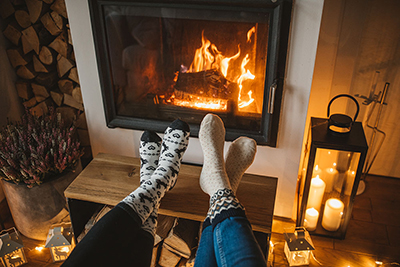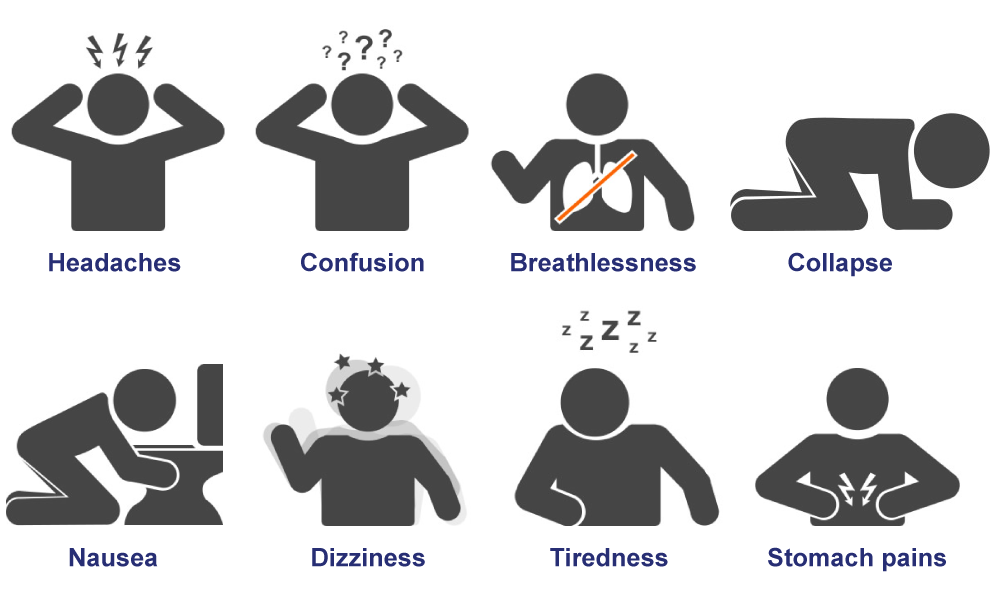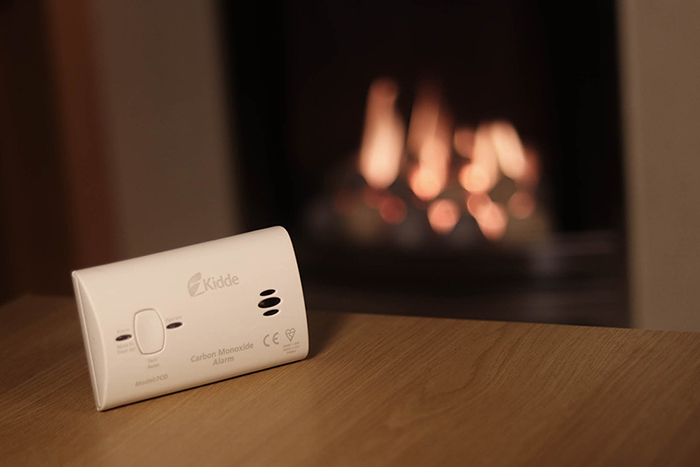-
Contact
Sales & Customer Service
0800 612 6537 support@safelincs.co.uk Live ChatDelivery Enquiries
0800 077 6149 - Resources
Fire & Safety Solutions
CALL OUR TEAM NOW 0800 612 6537
Also FREE from UK mobiles
Free Delivery
on 100s of Products
Live Chat - Online
Instant help & Advice
Trade Discounts
and exclusive pricing
0% Credit Available
Open an account now
5 Star Customer Feedback
Carbon Monoxide (CO) Information
Carbon monoxide is often referred to as ‘The Silent Killer’. This is because you can't smell, hear or see carbon monoxide, yet it is a highly toxic gas which can have devastating consequences.
What is Carbon Monoxide?
Carbon monoxide (CO) is an extremely dangerous gas that has no colour, smell or taste and cannot be detected by the human senses. It is produced when fossil fuel (gas, oil, coal, wood, etc.) is not burnt properly and when inhaled it combines with the haemoglobin in red blood cells and reduces the oxygen-carrying capabilities of the body.
Why is Carbon Monoxide Dangerous?
Because carbon monoxide has no colour, smell or taste it is completely invisible and undetectable to human senses. The symptoms of carbon monoxide poisoning can also be easily mistaken for flu making it extremely dangerous and hard to recognise.
Inhaling carbon monoxide reduces the oxygen-carrying capability of the blood and leaves vital organs and tissue starved of oxygen. Every year in the UK, around 4000 people visit an A&E department with suspected carbon monoxide poisoning and around 60 people die as a direct result of exposure to carbon monoxide. Many more people die as a result of strokes and respiratory illnesses made worse by inhaling low levels of CO over prolonged periods. Pets are also particularly susceptible to CO poisoning as they are smaller and so the effects are greater.
Sources of Carbon Monoxide
Carbon monoxide gas can be produced due to a fault, poor maintenance or improper installation of everyday appliances.
Fuel-burning appliances should be maintained regularly but, no matter how rigorous maintenance schedules are, appliances may become damaged and stop functioning properly at any time, creating a source of carbon monoxide. The most common sources of carbon monoxide in the home are:
- Boilers and central heating systems – look for flames burning orange or yellow instead of intense blue
- Log burners – ensure you service your wood-burning appliances regularly and always use engineers approved by HETAS
- Open fires – ensure flues are swept annually and fires becoming difficult to light could indicate it is not burning correctly
- Gas cookers, stoves and hobs – look out for dark, sooty stains on and above your cooker and lazy yellow of orange flames on your hob
Additional risks from CO poisoning can come from other sources, such as:
- Motor vehicle exhaust fumes
- BBQs, patio heaters and petrol mowers
- Generators
- Gas and oil water heaters
- Shisha pipes (shisha pipes burn charcoal and tobacco)


What are the Symptoms of Carbon Monoxide Poisoning?
The symptoms of carbon monoxide poisoning can easily be mistaken for the other illnesses such as the flu, food poisoning or a viral infection. Prolonged exposure to CO can lead to these symptoms gradually getting worse and higher levels of carbon monoxide can cause more severe symptoms.
The Main Symptoms to Look for
More severe poisoning can result in a fast and irregular heart rate, over-breathing (hyperventilation), confusion, drowsiness and difficulty breathing.
Being able to recognise the main symptoms of carbon monoxide poisoning could save lives and ensure that carbon monoxide poisoning isn't mistaken for something else. It is important to remember that your symptoms will be less severe when you are away from the source of carbon monoxide and to check if others, including pets, are experiencing similar symptoms.
The main symptoms to look out for include:

What CO Level is Dangerous?
Prolonged exposure to carbon monoxide levels of 10ppm (parts per million) or above is shown to have adverse effects on the body and brain.
| Concentration of CO in the air | Implications of Exposure |
|---|---|
| 10 parts per million (ppm) | Threshold at which prolonged exposure can have adverse effects on the body and brain. |
| 50 parts per million (ppm) | Safety level as specified by the Health and Safety Executive for a maximum of 30 minutes. |
| 200 PPM | Slight headache within 2-3 hours. |
| 400 PPM | Frontal headache within 1-2 hours, becoming widespread in 3 hours. |
| 800 PPM | Dizziness, nausea, convulsions within 45 minutes, insensible in 2 hours. |
Sourced from: carbonmonoxidekills.com
Should I Have a Carbon Monoxide Detector?
Carbon monoxide is completely invisible and undetectable to human senses. It has no colour, smell or taste and because the symptoms of carbon monoxide poisoning can be easily mistaken for the flu it is extremely dangerous and hard to recognise. An audible CO detector is the only certified way to detect carbon monoxide and keep yourself and your family safe.
You should have at least one carbon monoxide alarm in your home. Ideally, you should have one alarm in every room where there is a solid fuel burning appliance.
Be aware that carbon monoxide can travel through walls. If your neighbour has an appliance that is leaking carbon monoxide, your home could be affected as well.
How to Choose a CO detector
Carbon monoxide alarms are available in many different shapes, sizes and variations and buying one can sometimes be confusing. We have put together a buying guide to show you the features you should be looking for when buying a carbon monoxide detector.
- Audible Alarm – Always buy a CO detector with a loud 85dB audible alarm that can alert you to the presence of carbon monoxide
- Certification – Make sure your CO detector complies with BS EN 50291 and carries a British kitemark or European approval mark
- Warranty – Look out for carbon monoxide detectors that are supplied with a 5, 7 or 10 year manufacturer's warranty
- Low-Battery Warning – Choose an alarm that has a low battery warning. It give you an audible signal when you need to replace your batteries
- Sealed Lithium Battery – CO alarms with sealed lithium batteries provide additional peace of mind that your unit will be powered for its entire life
- Digital Display – A digital display alarm can give you an early visual warning if the level of carbon monoxide is creeping up
- Dual Sensor – If you want to have a single unit that can detect smoke and carbon monoxide, combined alarms are available
- Trustworthy Supplier – Buy your alarm from a trusted supplier and be aware of alarms that do not comply with European standards
Where should Carbon Monoxide Detectors be positioned?
CO detectors should be installed near potential sources of carbon monoxide, essentially any fuel-burning appliances. As you are likely to be most affected by CO in areas of your home that you spend the most time in it is advisable to install alarms in those areas as well, such as at head height in the living room and bedrooms. If your property has an attached garage with a connecting door through to the house, it is recommended to fit a CO alarm inside the house leading from that doorway.
Carbon monoxide has been proven to spread into neighbouring properties through open windows, as well as through loft spaces in semi-detached or terrace houses.
- Near an appliance: they should be placed within 1 to 3 metres horizontally from the appliance and between the height of the appliance to 150mm below the ceiling – i.e. not above a stove where it would be in the path of steam or fumes
- In living spaces: they should be positioned close to where the occupant's head is likely to be most of the time – e.g. on your bedside table
- On the ceiling: at least 30cm away from any wall, light fitting, or other obstruction.
Do not install CO alarms within 3 metres of doors or windows, above radiators, or immediately close to anything that gives off steam or fumes like a cooker or shower room. Similarly, it is not recommended to install detectors in dusty areas such as workshops or garages.

How Do I Protect Myself and My Family?
Making sure that your family and friends are aware of the symptoms of carbon monoxide poisoning is vital. Share with them what to look out for. You can also use this printable information poster to explain the dangers and to make sure they are prepared if a CO emergency situation arises.
- Make sure rooms and heaters are well ventilated
- Have your chimneys and flues checked regularly
- Make sure solid fuel appliances are maintained and serviced regularly by a reputable, registered engineer
- Do not leave petrol mowers or car engines running in a garage or enclosed space
- Avoid using barbeques in an enclosed space such as a tent, caravan or inside your home
- Buy a carbon monoxide detector.
What Do I Do if My Carbon Monoxide Detector Goes Off or I Suspect a Leak?
- Open the doors and windows to ventilate the area
- Turn off all fuel appliances and the mains gas supply if you can
- Evacuate the property immediately leaving the doors and windows open (make sure everybody is accounted for)
- Let any adjoining neighbours know because carbon monoxide can seep through walls floors and ceilings.
- Call Gas Emergency Services: 0800 111 999. If you believe that the source of carbon monoxide is not a gas appliance, contact either:
- Oftec (oil) - 0845 658 5080 or
- HETAS (solid fuel) - 0845 634 5626
- Get medical help immediately for anyone suffering the effects of carbon monoxide poisoning (headache, nausea), and advise that carbon monoxide poisoning is suspected
- Do not re-enter the property until it has been declared safe
- If a faulty gas appliance has been identified call Gas Safe Register - 0800 408 5500 - who will give you names of registered engineers in your area or check here
Many of the Fire Services in the UK have carbon monoxide testing equipment and can be called in emergencies
Safety While Outside the Home
Having a CO detector with you whilst you are travelling is essential; your home may be covered but you leave that protection behind when you go away. Portable carbon monoxide alarms can easily fit inside your suitcase or backpack and have been designed, tested and certified as safe to take with you on your travels.
Our travel CO alarms certified to BS EN50291-2 are classified as either ‘suitable for camping/caravans/boats’ or just ‘suitable for camping/caravans/motorhomes’.
Safety While Camping
When camping be aware that carbon monoxide can be produced from portable stoves, camp fires, barbeques and nearby vehicles. Always make sure you follow these simple rules when camping.
- Never take a BBQ or gas cylinder cooker into your tent to cook food
- Never use a BBQ (even when it has gone out, coal produces high levels of CO when smouldering) or gas cylinder cooker to warm up your tent
- Always make sure you cook a safe distance away from your tent (wind can blow carbon monoxide into your tent)
- Always take a portable and audible CO detector with you
Safety for Boats and Caravans
Boats and caravans are often exposed to external sources of carbon monoxide such as other nearby vehicles and boats, portable generators, portable stoves and barbeques. It is important to make sure that boats and caravans are well ventilated and that you follow these simple rules.
- Have your own appliances maintained and serviced regularly by an approved engineer
- Be aware of your surroundings and neighbouring boats and caravans – Poorly maintained vehicles could produce dangerous levels of carbon monoxide
- Install an audible CO detector that is approved for use in boats and caravans
Safety on Holiday
Make sure that you don't let your guard down when you are staying away from home or on holiday. It is important to remember that carbon monoxide can be anywhere at anytime and that additional and unexpected risks may be around you while you are away from home.
Hotels and B&B's often use fossil fuel burning appliances such as boilers and fires for heating and hot water. Although these appliances are not usually located in the actual hotel rooms it is important to remember that carbon monoxide can seep through walls. Always be aware of your surroundings and take a portable and audible CO detector on holiday with you.
Safety at Work
Many people work in environments where they are exposed to potential sources of carbon monoxide daily. While these are usually all extremely low risk areas be aware that carbon monoxide could be produced from:
- Plant machinery such as diggers, dumper trucks, cement mixers
- Gas powered forklift trucks
- Portable generators
- Petrol and Diesel engines
Reviewed: 24/11/2020 (doc:49 V2.0). Our articles are reviewed regularly. However, any changes made to standards or legislation following the review date will not have been considered. Please note that we provide abridged, easy-to-understand guidance. To make detailed decisions about your fire safety provisions, you might require further advice or need to consult the full standards and legislation.



















